Carlos Simon: The Block
In 1971, American artist Romare Bearden looked out the window of his friend Albert Murray’s Lenox Avenue apartment and was inspired to create an epic narrative out of something that was very familiar and ordinary: a window view of Harlem between 132nd and 133rd Street. The view is not meant to represent just that block but the liveliness of all of Harlem.
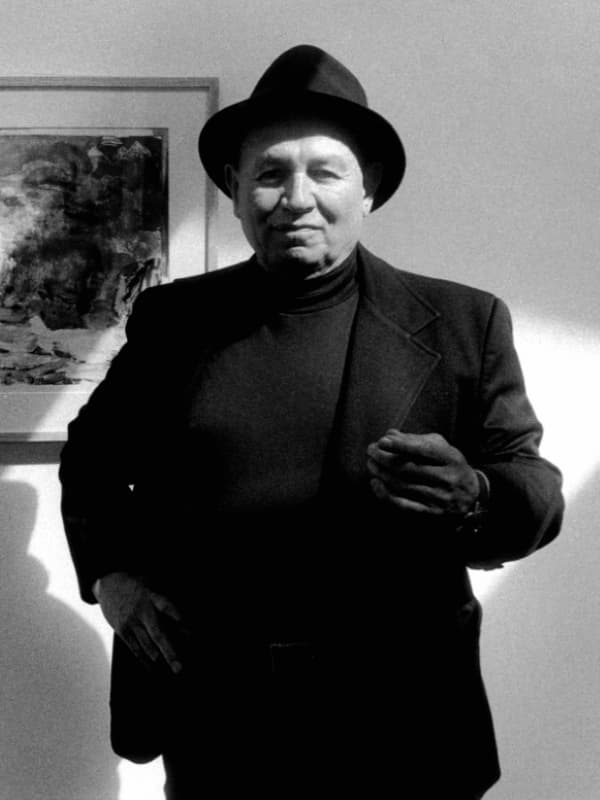
Romare Bearden
The work is enormous: 121.9 × 548.6 cm (48 in. × 18 ft.), and in this picture of the artist in front of his work, you can get an idea of its size.
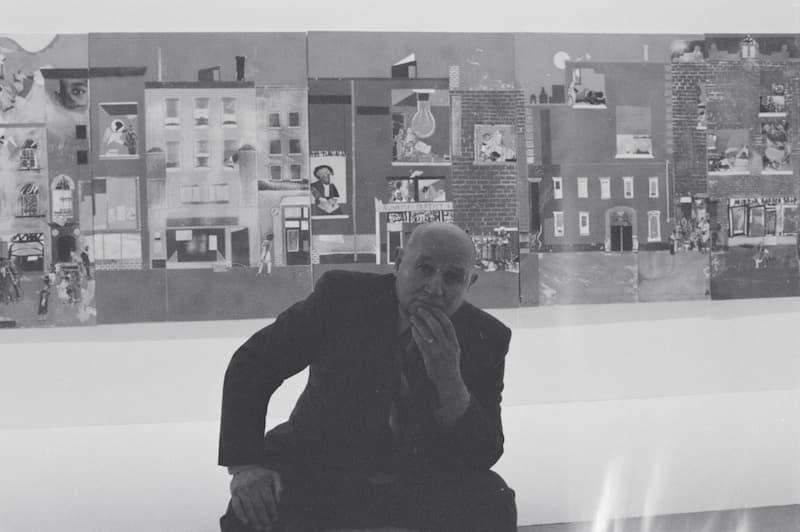
Romare Bearden in front of The Block, 1971, as shown at the Museum of Modern Art in Romare Bearden: The Prevalence of Ritual
Beardon has created in collage, a virtual panorama of one city block in New York.

Bearden: The Block, 1971 (Metropolitan Museum of Art)
The work was created in six separate panels to be exhibited together to create a continuous scene. At street level, business and institutions have their place: a liquor store, a church, a barbershop, while in the rooms above, we look into rooms and see the private lives of the people.
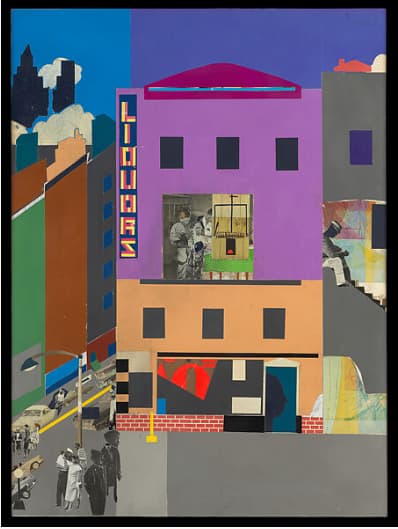
Bearden: The Block (detail 1), 1971 (Metropolitan Museum of Art)
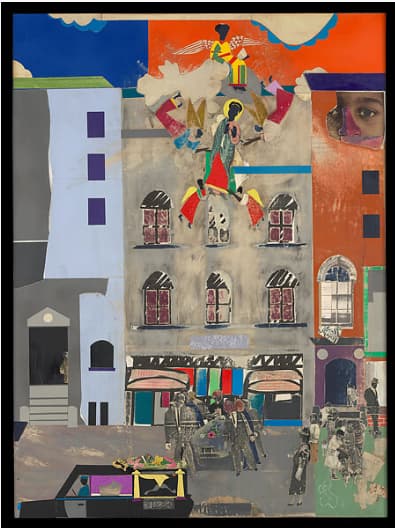
Bearden: The Block (detail 2), 1971 (Metropolitan Museum of Art)

Bearden: The Block (detail 3), 1971 (Metropolitan Museum of Art)
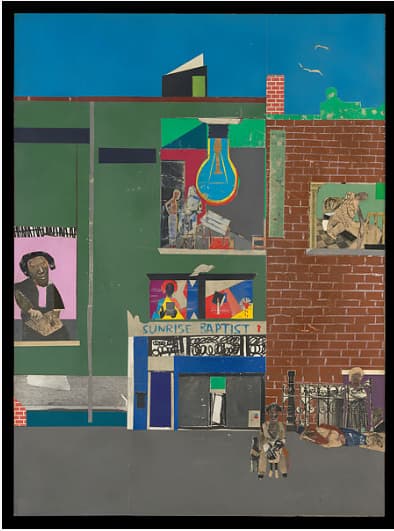
Bearden: The Block (detail 4), 1971 (Metropolitan Museum of Art)
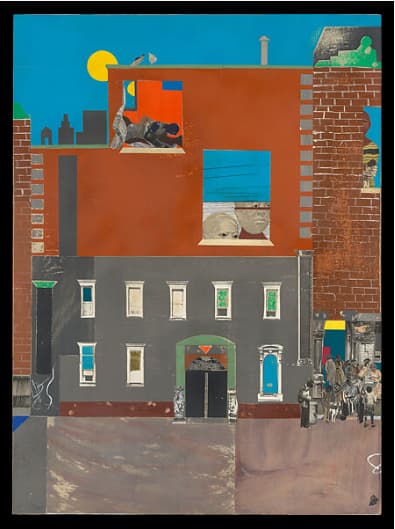
Bearden: The Block (detail 5), 1971 (Metropolitan Museum of Art)
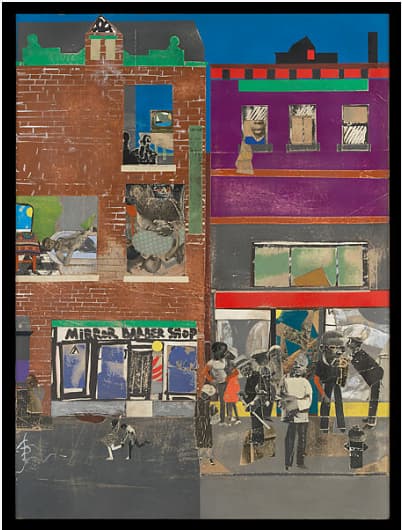
Bearden: The Block (detail 6), 1971 (Metropolitan Museum of Art)
One writer on the collage said: ‘He wants you to focus on the entire composition, but also see the small, little, human moments that are happening. By showing a giant child’s face, or children in a window with a giant mousetrap, it makes you look at them more carefully than if they were in proper scale, and makes you wonder what’s going on in their lives behind those tenement walls’. There are also elements in Bearden’s work that are more metaphysical, such as the angel waiting above the church to carry the soul of the departed to heaven (detail 2 above). Children run and play in front of the barbershop (detail 6 above) while next door, man gather in discussion or to look at their new haircuts. Life is all around.
The Block was originally exhibited with sound and was accompanied by an audio of the sounds on the street, including news broadcasts, babies crying, dogs barking, people talking, a church service, music, cars going by, and so on. The sounds effects and on-the-street recordings were merged into an 8-minute collage soundscape. Created by Daniel Dembrosky for Bearden, the recording was lost for many years and was only recently discovered and put on the Met website in 2024.
RECORDING on this website: https://www.metmuseum.org/perspectives/articles/2024/02/romare_bearden_the_block
The collage, made of ‘cut and pasted printed, colored and metallic papers, photostats, graphite, ink marker, gouache, watercolor, and ink on Masonite’, as the Met Museum description has it.
American composer Carlos Simon has made his own version of The Block. His orchestral study was made in 2018 before the original soundtrack was relocated. Simon’s block picks up on the excitement in the city. It brings to life the static images in the collage: a funeral procession, children at play, a couple embracing in bed, and people convening in front of a storefront, which is revealed through a close study of Bearden’s work.
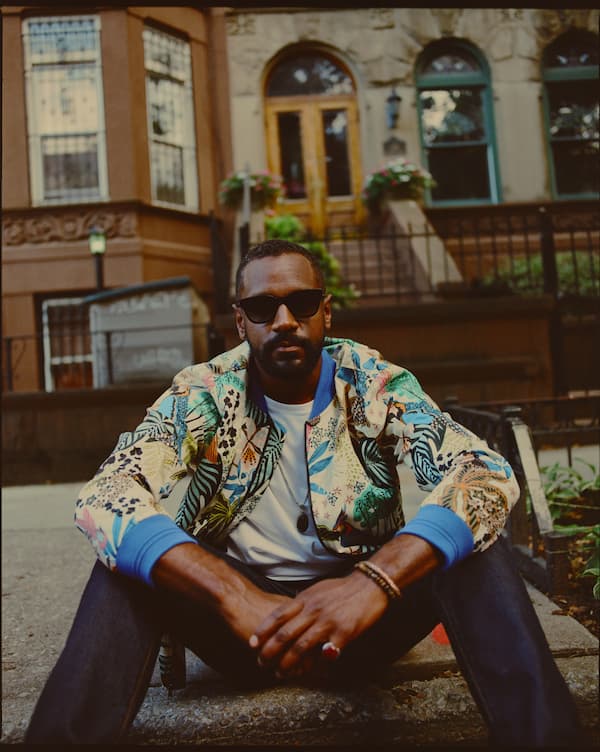
Carlos Simon
As a contrast to the literal sounds in the 1971 soundscape, Simon’s symphonic work brings a dimensionality to the work – while the woodwinds are doing one thing, the brass are focused on something else, the violins add their colour, and behind it all the percussion drives on.
Carlos Simon: The Block (National Symphony Orchestra; Gianandrea Noseda, cond.)
The poet Major Jackson wrote a poem based on Bearden’s work. Like Bearden, Jackson also saw the sound element of the collage.

MajorJackson (photo by Beowulf Sheehan)
His poem, The Block, brings out all elements of the work: images, colours, and the sound.
A village though, holy presence
in the bricks, to see through walls
with our eyes. Bodies assembled such that traffic
stays on the margins but the bright river,
though stilled on one Harlem avenue, flows out
from thresholds and doorways
where penny-colored faces profile like noble silhouettes,
and thus, this tension between life’s rush
and final doom. Someone has died,
and a hearse awaits, Bearden seems to say,
for us all, swimming with his mouth wide open.
No smirks from those enamored of the panorama.
To cross a corner, to sit sullen
on a staircase, to grasp a child from behind
weaves a cherished landscape of propositions.
A mother is half a Madonna,
and a blue bulb’s filament looms above the saints
of Sunrise Baptist whose hymns are unheard melodies,
whose prayer book, candle, altar
fix us to Southern roads. Why leave
when so much is here to observe?
The syncopated dailiness is Greek in proportions.
Even a barbershop serves a mirror,
all snips and shears and fades.
We, too, resurrect and ascend
and shake hands with Ethiopian angels,
and what carries the music
of our ascension is life, an improvised
resurrection, a colorful bricolage
of ritualistic seeing, tenements played
like keys, a communal blues, our imperative
for tenderness, lovemaking at dusk,
a billowing curtain serene as a kiss.
Here, there are no secrets.
These bodies in repose, bodies rising from
metal frame beds, bodies soaking in tubs,
bodies watching TVs as boats sail on,
children hovering above hopscotch squares,
what are they but the affirmative dream
of a city whose arrivants are dignity personified?
Look closer, look in:
animals are here, too.
A yellow pigeon coos on an awning,
another pair on a rooftop,
seagulls lift and angle into thermals,
a dalmatian stands beside a boy
as if in a Brueghel.
The tenements on Lenox between 132nd and 133rd
proclaim the flaneur’s feast: a mother calls down
from a window to remind her daughter
of ingredients for potato pone, pork belly, and cow peas.
At the corner store, a couple leans
against glass oblivious of the nearby crowd
seeming to convene a second line.
We are not without our vices
so says the neon Liquors sign
and the blanketed man who’s made concrete his bed.
Several floors above,
a mousetrap is a window
that wants to ambush a setting sun.
But the old folk from the fields
hold sentry like F. Douglass in portraiture,
and H. Tubman, and may we
revere them, may they occupy the periphery
of our vibrant canvases.
We are entangled in geometric shapes.
Our limbs are their limbs.
In cities, feelings pass through walls
For an idea of what that block looks like today, Google Streetview provides an answer.
For more of the best in classical music, sign up for our E-Newsletter
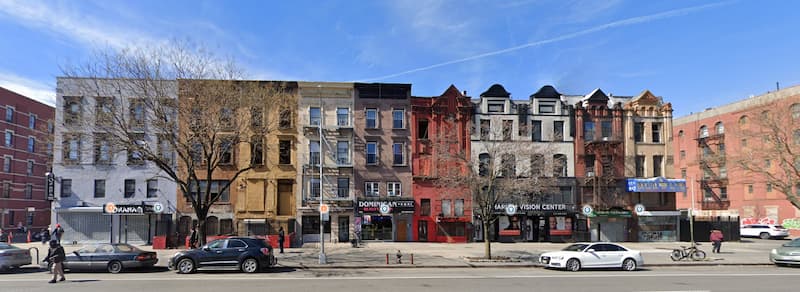
Lenox Avenue between 132nd and 133rd Streets, March 2023 (Google Streetview)




